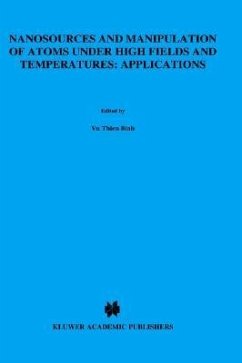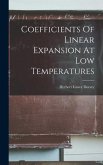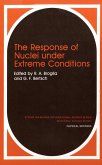The perception of the atomic-scale world has greatly changed since the discovery and development, in the early '80s, of scanning tunneling microscopy by Binnig and Rohrer. Beyond the observation of individual atoms, which is now routine, the concept of playing with atoms has become commonplace. This has led to the fashioning of tools at the atomic scale, to the deposition, the displacement and the creation of atomic structures and also to a knowledge of interactions and contacts between atoms. Nanotips ending with a single atom are sources of ultra-fine charged beams. They can be unique tools for high resolution observations, for microfabrications by micro-machining and deposition at a scale not previously attainable, with a working distance less stringent than with STM devices. These nanosources should then be the starting point for the development of high-performance miniature devices. For all the subjects mentioned above, new laws have been identified and circumscribed in the different articles.
These proceedings marked the shift of emphasis from a passive attitude of analysis towards a more active role of the scientist in the creation and use of atomic configurations.
(ABSTRACT)
This volume contains the proceedings of the NATO Advanced Research Workshop which reviewed the basic principles and highlighted the progress made during the last few years on the atomic scale sources and the interactions between microprobes and samples. The motivation is to use the novel properties attached to the atomic dimensions to develop nanoscale technologies.
Hinweis: Dieser Artikel kann nur an eine deutsche Lieferadresse ausgeliefert werden.
These proceedings marked the shift of emphasis from a passive attitude of analysis towards a more active role of the scientist in the creation and use of atomic configurations.
(ABSTRACT)
This volume contains the proceedings of the NATO Advanced Research Workshop which reviewed the basic principles and highlighted the progress made during the last few years on the atomic scale sources and the interactions between microprobes and samples. The motivation is to use the novel properties attached to the atomic dimensions to develop nanoscale technologies.
Hinweis: Dieser Artikel kann nur an eine deutsche Lieferadresse ausgeliefert werden.








